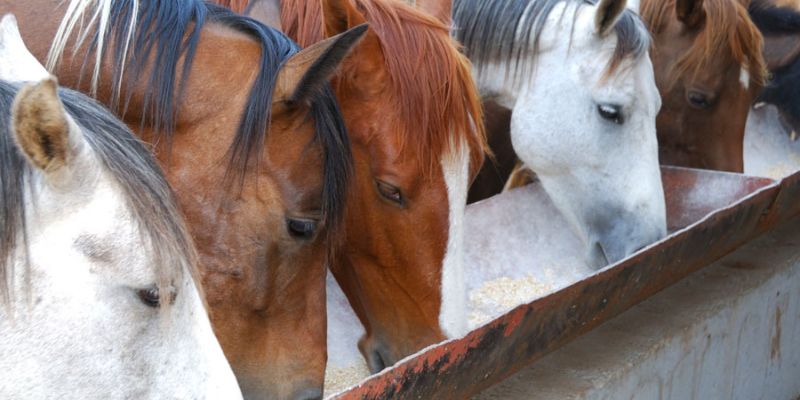Todos los miembros de la familia equina han evolucionado para extraer la nutrición necesaria de los pastos. Especialmente los caballos y los burros son capaces de extraer nutrientes de pastos y plantas gruesos que podrían no sustentar a un caballo más grande. Los fundamentos de la nutrición de los caballos se basan en su capacidad para aprovechar al máximo los pastos. Sus dientes son adecuados para triturar la fibra vegetal gruesa, y su largo y lento sistema digestivo extrae eficientemente nutrientes y energía de las plantas que come.
Algunos caballos son fáciles de cuidar y pueden vivir bastante bien con pastos mínimos. Otros pasarán hambre de nutrición. Un caballo que trabaja muy duro puede no recibir suficiente nutrición. Realmente depende del tipo de caballo que tengas y de cuál sea su trabajo para que prospere o no con una dieta a base de pasto, especialmente una que no sea de primera categoría.
¿Cuáles son las limitaciones del sistema digestivo del caballo?
Los caballos son herbívoros no rumiantes (fermentadores del intestino trasero). Su pequeño estómago sólo tiene una capacidad de 2 a 4 galones para un caballo de tamaño promedio de 1000 libras. Esto limita la cantidad de alimento que un caballo puede ingerir al mismo tiempo. Los équidos han evolucionado como herbívoros que pasan unas 16 horas al día pastando pastos. El estómago sirve para secretar ácido clorhídrico (HCl) y pepsina para iniciar la descomposición de los alimentos que ingresan al estómago. Los caballos no pueden regurgitar la comida, por lo que sí comen en exceso o comen algo venenoso, el vómito no es una opción.
Los caballos también son únicos porque no tienen vesícula biliar. Esto hace que las dietas ricas en grasas sean difíciles de digerir y utilizar. Los caballos pueden digerir hasta un 20 % de grasa en su dieta, pero les lleva un lapso de 3 a 4 semanas adaptarse. Las raciones normales para caballos contienen sólo entre un 3 y un 4 % de grasa. El intestino delgado del caballo mide entre 50 y 70 pies de largo y tiene capacidad para entre 10 y 23 galones. La mayoría de los nutrientes (proteínas, algunos carbohidratos y grasas) se digieren en el intestino delgado. Aquí también se absorben la mayoría de las vitaminas y minerales.
La mayoría de los líquidos pasan al ciego, que mide de 3 a 4 pies de largo y contiene de 7 a 8 galones. La desintoxicación de sustancias tóxicas se produce en el ciego. También contiene bacterias y protozoos que pasan por el intestino delgado para digerir la fibra y los carbohidratos solubles. El colon grueso, el colon delgado y el recto forman el intestino grueso. El colon grande mide de 10 a 12 pies de largo y tiene capacidad de 14 a 16 galones. Consta de cuatro partes: colon ventral derecho, ángulo esternal al colon ventral izquierdo, ángulo pélvico al colon dorsal izquierdo y ángulo diafragmático al colon dorsal derecho.
Los ángulos esternal y diafragmático son un lugar común de impacto. El colon pequeño conduce al recto. Tiene 10 pies de largo y tiene capacidad para sólo 5 galones de material.
¿Cuáles son los nutrientes básicos para los caballos?
Al alimentar a los caballos, es importante reconocer que existen algunas categorías básicas de nutrientes que deben cumplirse: carbohidratos, proteínas, grasas, vitaminas, minerales y agua. A menudo, las empresas de piensos equilibran los primeros cinco nutrientes por nosotros; sin embargo, es fundamental no olvidarse del agua. Un caballo normal y sano consumirá entre 5 y 15 (o más) galones de agua por día, dependiendo de la temperatura, la humedad y el nivel de actividad. Veamos cada categoría de nutrientes que encontrará al evaluar su programa de alimentación.
Agua
El agua es el nutriente MÁS IMPORTANTE; ¡Los caballos no pueden vivir mucho sin él! Asegúrese siempre de que haya un suministro adecuado y limpio de agua. Los caballos generalmente beben alrededor de 2 litros de agua por cada libra de heno que consumen. En condiciones de alta temperatura, trabajo duro o para la yegua lactante, el requerimiento de agua puede ser de 3 a 4 veces el consumo normal.
Los signos de que su caballo puede tener deficiencia de agua incluyen una menor ingesta de alimento y actividad física, y signos de deshidratación como membranas mucosas secas en la boca, heces secas y disminución del tiempo de llenado capilar. Las posibles causas de las deficiencias de agua incluyen falta de fuente de agua, baja palatabilidad o accesibilidad del agua (congelada, receptora o contaminada) o enfermedades.
Carbohidratos
Lo más probable es que los carbohidratos constituyen la mayor parte de la dieta del caballo. Se pueden dividir en dos grupos: estructurales (fibra) y no estructurales (azúcares y almidones). Los carbohidratos estructurales se encuentran en mayores cantidades en el forraje que come el caballo (por ejemplo, heno, pasto) y pueden ser digeridos gracias al diseño del tracto intestinal del caballo. Después de la digestión en el estómago y el intestino delgado, el material digestivo del caballo ingresa al intestino grueso (intestino posterior), que en el caballo está formado por el ciego y el colon.
El ciego y el colon contienen microorganismos que son capaces de descomponer los carbohidratos estructurales en una fuente de energía que el caballo puede absorber. Esta es la razón por la que los caballos tienen tanto valor nutricional del pasto y el heno. Es importante alimentar con heno de buena calidad, libre de moho y polvo y cortado en una longitud y etapa de madurez adecuadas. El que tiene un tallo demasiado grueso o demasiado fino puede provocar problemas digestivos como impactaciones.
Protein
Protein, which is necessary for body growth and maintenance, is a nutrient that is poorly understood by many horse owners. Proteins are broken down in the small intestine into amino acids that are recombined to make proteins in the body that make up muscle, hair and hoof. It is important to realize that proteins are composed of amino acids, and the proteins that the body makes have very specific amino acid sequences. The amount of protein that the body can synthesize is limited by the amino acid that basically runs out of supply first. For horses, this is generally lysine.
There are advantages to improving protein quality without increasing the total protein amount. It is a commonly held misconception in the horse industry that higher protein is associated with higher energy. In reality, proteins are the most difficult energy source for the horse to digest and convert to usable energy. Protein requirements for growth and maintenance vary depending on age and workload.
Fats
Feeding high-fat diets is a relatively new trend in the horse industry. It has been demonstrated that horses can tolerate a fairly high level of fat in their diet. Fat is an excellent and easily digestible source of energy. Commercial feeds that are not supplemented with additional fats contain approximately 2 to 4 percent fat. Many commercial feeds are now supplemented with fat in the form of some type of stabilized oil.
These feeds can contain anywhere from 6 to 12 percent fat. Since adding fat to a feed increases its energy density and the horse will require less feed, it is important to be sure that all other nutrients (i.e., protein, vitamins, minerals) are also high enough to meet your horse’s requirements.
Vitamins
Vitamins are critically important organic compounds. They must be present in the body to enable important reactions to take place that allow the animal to live. Vitamins are divided into two categories: the water-soluble group consists of the B-complex vitamins (e.g., B1, B2) and the fat-soluble group is comprised of vitamins A, E, D and K. Some vitamins also have associated names (for example, B1 is also known as thiamine).
It is important to recognize that the horse synthesizes many of the vitamins it needs and therefore does not typically need dietary supplementation of all vitamins. This would include vitamin C, B-vitamins and vitamin K; therefore, you will often not see these vitamins included on commercial horse feed tags. It is important to check your feed and be sure that all of your horse’s vitamin requirements are being met since vitamin deficiencies can lead to various health problems.
Minerals
Minerals are critical inorganic materials that must be present in adequate amounts for the body to function properly. Minerals are another item that can be found in supplements on feed and tack store shelves. It is important to understand that mineral needs will change depending on your horse’s age and status (i.e., if the horse is working, gestating or lactating). Most commercial feed companies balance their feed to meet the mineral requirements of different classifications of horses. Forage will also provide minerals. In some cases, additional supplementation of some minerals may provide desirable results.
If your horse does not receive a commercial concentrate or eats very little of it, it may be important to supplement additional vitamins/minerals to his forage diet by feeding a product called a ration balancer. Ration balancers are manufactured by many feed companies and are designed to be fed at a low level (approximately 1 pound per day) that contains the needed vitamins, minerals and protein. It is also possible to meet vitamin and mineral requirements by providing a free-choice loose salt-vitamin-mineral mix.
Simple Calculations to determine Nutrients Intake
Nutritional requirements vary from horse to horse and it is important to be able to examine a feed tag and assess whether or not that feed will meet your horse’s needs. Manufacturers typically put feeding instructions on the tag to help buyers determine if the feed is appropriate for their horses and how much of it should be fed to each individual. However, it is beneficial to be able to look at a particular feed and understand why it is or is not a good choice for your horse.
If you want to examine your feeding program more closely, the most in-depth listing of requirements can be found in the National Research Council (NRC) recommendations for horses (Nutrient Requirements for Horses 6th Edition, 2006). Approximate nutritional requirements based on a horse’s age, workload and status are listed along with the nutritional value of different grains and hays. This resource is based on scientific research and is updated periodically to stay current with recent findings.
How Evolution shaped Horses’ unique nutritional needs?
An understanding of equine evolution can help you wrap your head around best feeding practices for horses. The horse is a grazing animal that evolved to eat fiber with a high water content (grass) continuously for about 18 hours a day. To make our lives easier, humans often instead feed a low water content fiber (hay) in larger quantities that horses eat over a shorter period. That, in combination with a greatly reduced amount of exercise compared to life in the wild (the average domestic horse is relatively stallbound these days) and the addition of more rapidly digested/fermented grain products, has the potential to “overwhelm” the horse’s gastrointestinal system.
Although grain products might be necessary to make up for the loss of nutrient value in the grasses (the process of making hay decreases the nutrient value of the grass), especially for horses that are working hard and need the extra calories, remember that the horse’s intestine evolved to handle fiber, not grain products. An all-forage diet (hay and/or pasture) can meet the nutritional needs of most adult horses that are working lightly or not at all, provided the hay/pasture is of good quality.

